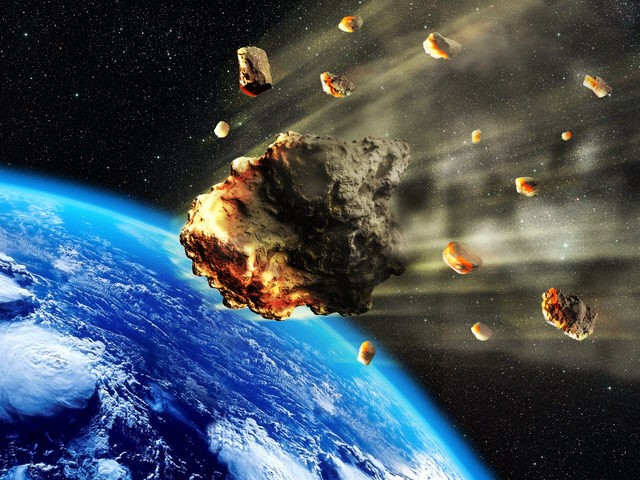An object that blazed through the earth’s atmosphere at unusually high speeds off the coast of Papua New Guinea in 2014 has been confirmed as the first known meteor to have originated in interstellar space, U.S. government officials have announced.
On January 8, 2014, at 17:05:34 UCT, the meteor rocketed into the atmosphere off the Manus Island coast, “burning up with an energy equivalent to about 110 metric tons of TNT and raining debris into the depths of the Pacific Ocean,” wrote Dr. Amir Siraj in a Scientific American article Tuesday. NBC News reports the rock has been dubbed CNEOS 2014-01-08.
In 2019, Siraj, then an undergraduate student at Harvard University, and Astrophysicist Dr. Avi Loeb, Siraj’s academic advisor, reported with 99.999 percent confidence that the meteor was interstellar. The duo published their findings in a June 6, 2019, report entitled: Discovery of a Meteor of Interstellar Origin.
In the Scientific American piece, Siraj noted that he and Loeb had difficulty getting their work published in a peer-review journal, as reviewers were apprehensive regarding the unknown essence of the error bars. The pair then sought the help of two scientists at the Los Alamos National Laboratory.
Scientist Matt Heavner got in touch with an anonymous analyst, who procured satellite data regarding the meteor’s velocity components, which in turn, enabled Siraj and Loeb to claim 99.999 percent certainty regarding the origins of the meteor, Siraj said. However, peer-reviewers again rejected a paper from the researchers as there was no official government statement, but only communications with the anonymous analyst, according to Siraj.
Though immensely confident in their findings, the realization was not confirmed until March or April, when Space Force Deputy Commander Lt. Gen. John Shaw verified the researchers’ report, Siraj said in Tuesday’s article.
“Dr. Joel Mozer, the Chief Scientist of Space Operations Command, reviewed analysis of additional data available to the Department of Defense related to this finding,” Shaw wrote in the memorandum, which U.S. Space Command shared on Twitter on April 6. “Dr. Mozer confirmed that the velocity estimate reported to NASA is sufficiently accurate to indicate interstellar trajectory.”
6/ “I had the pleasure of signing a memo with @ussfspoc’s Chief Scientist, Dr. Mozer, to confirm that a previously-detected interstellar object was indeed an interstellar object, a confirmation that assisted the broader astronomical community.” pic.twitter.com/PGlIOnCSrW
— U.S. Space Command (@US_SpaceCom) April 7, 2022
“I had the pleasure of signing a memo with @ussfspoc’s Chief Scientist, Dr. Mozer, to confirm that a previously-detected interstellar object was indeed an interstellar object, a confirmation that assisted the broader astronomical community,” Shaw said.
The telltale sign indicating the meteor originated in interstellar space was its speed, as anything traveling above 42 kilometers per second escapes the sun’s gravitational pull, Siraj said:
Anything traveling over this local celestial speed limit, then, may come from (and if unimpeded should return to) interstellar space. The CNEOS entry for the 2014 Manus Island fireball indicated the meteor hit the Earth’s atmosphere at about 45 kilometers per second—very promising. However, some of this speed came from the object’s motion relative to the Earth and the Earth’s motion around the sun. Teasing apart these effects with the help of computer programs that I wrote, I found that the object had overtaken the Earth from behind before striking our atmosphere, and likely had a sun-relative speed closer to 60 kilometers per second.
“If the data were correct, this event would be the first interstellar meteor ever discovered,” he went on to add.
The discovery also makes CNEOS 2014-01-08 the earliest known interstellar object to enter the earth’s atmosphere – predating “‘Oumuamua, the object identified in October 2017 as the first known interstellar visitor to the solar system,” Siraj noted in his article. CNEOS 2014-01-08, ‘Oumuamua, and a comet dubbed Borisov, are the only three objects confirmed to have reached earth after originating in interstellar space.

COMMENTS
Please let us know if you're having issues with commenting.